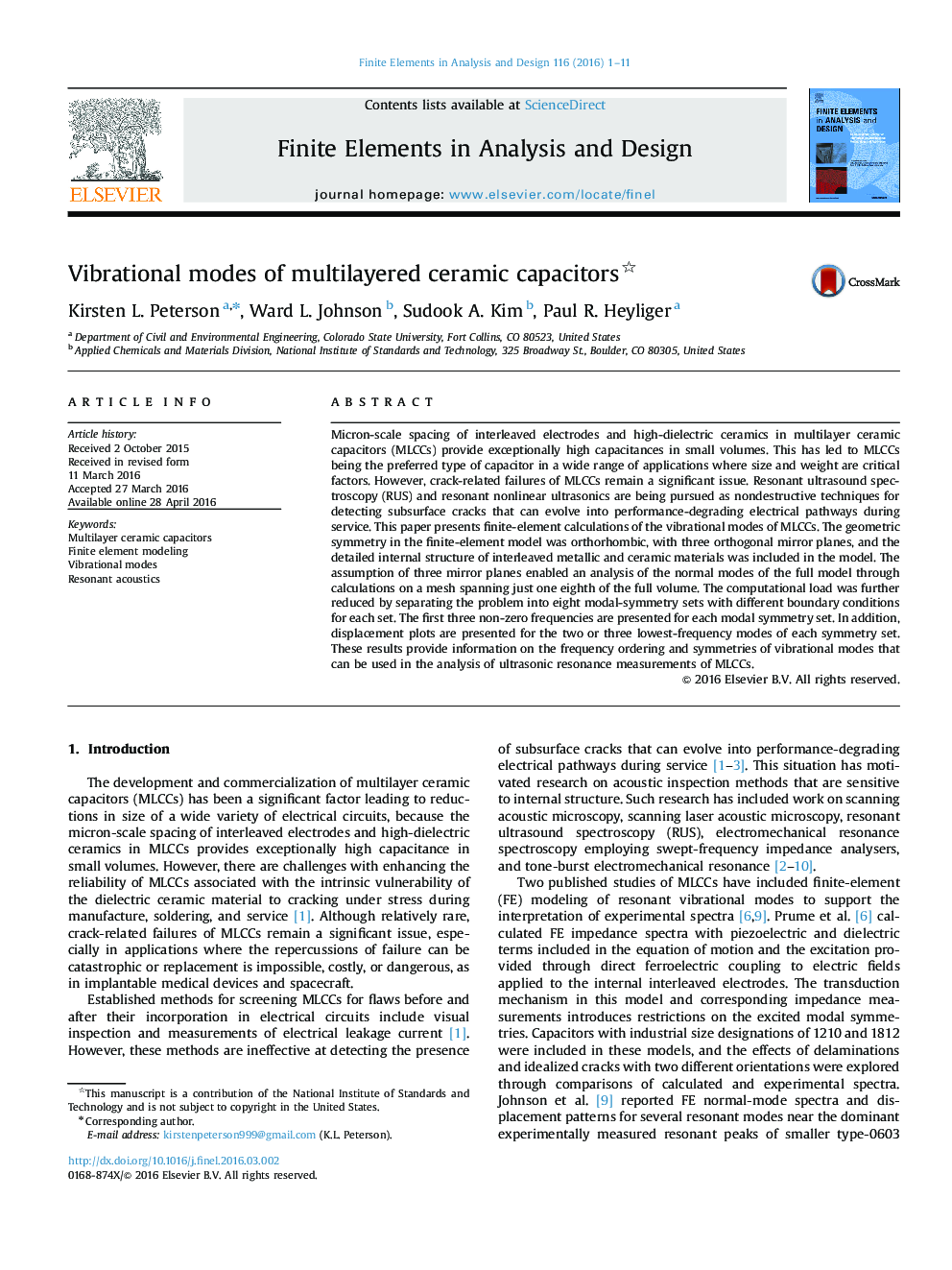| Article ID | Journal | Published Year | Pages | File Type |
|---|---|---|---|---|
| 514193 | Finite Elements in Analysis and Design | 2016 | 11 Pages |
•We perform finite-element calculations on a multilayer ceramic capacitor (MLCC).•We present at least two frequencies and mode shapes for each modal-symmetry set.•Resonant frequencies are not greatly affected by variations in endcap geometry.•The frequencies presented range from 0.354 MHz (first EV) to 1.418 MHz (third EX).•Results will aid in interpreting resonant ultrasound spectroscopy measurements.
Micron-scale spacing of interleaved electrodes and high-dielectric ceramics in multilayer ceramic capacitors (MLCCs) provide exceptionally high capacitances in small volumes. This has led to MLCCs being the preferred type of capacitor in a wide range of applications where size and weight are critical factors. However, crack-related failures of MLCCs remain a significant issue. Resonant ultrasound spectroscopy (RUS) and resonant nonlinear ultrasonics are being pursued as nondestructive techniques for detecting subsurface cracks that can evolve into performance-degrading electrical pathways during service. This paper presents finite-element calculations of the vibrational modes of MLCCs. The geometric symmetry in the finite-element model was orthorhombic, with three orthogonal mirror planes, and the detailed internal structure of interleaved metallic and ceramic materials was included in the model. The assumption of three mirror planes enabled an analysis of the normal modes of the full model through calculations on a mesh spanning just one eighth of the full volume. The computational load was further reduced by separating the problem into eight modal-symmetry sets with different boundary conditions for each set. The first three non-zero frequencies are presented for each modal symmetry set. In addition, displacement plots are presented for the two or three lowest-frequency modes of each symmetry set. These results provide information on the frequency ordering and symmetries of vibrational modes that can be used in the analysis of ultrasonic resonance measurements of MLCCs.
